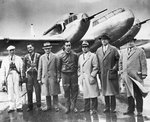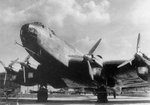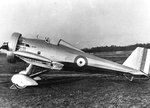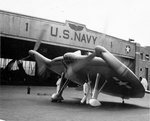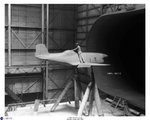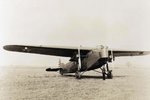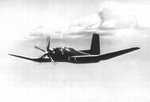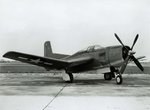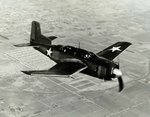Good stuff!
Navigation
Install the app
How to install the app on iOS
Follow along with the video below to see how to install our site as a web app on your home screen.
Note: This feature may not be available in some browsers.
More options
You are using an out of date browser. It may not display this or other websites correctly.
You should upgrade or use an alternative browser.
You should upgrade or use an alternative browser.
Frustated Projects (1 Viewer)
- Thread starter gekho
- Start date
Ad: This forum contains affiliate links to products on Amazon and eBay. More information in Terms and rules
More options
Who Replied?- Thread starter
- #102
The Heinkel He 280 was the first jet powered fighter aircraft to take to the skies, although it never entered mass production. The Heinkel He 178, the first aircraft to fly solely on jet power, had been powered by a single jet engine built into the fuselage, but the German Air Ministry believed that the fuselage mounted engine presented too many problems, and so work moved on twin-engined aircraft, with the engines mounted outside the fuselage, in most cases in nacelles carried below the wings. The Heinkel He 178 had been powered by the HeS 3 and HeS 6 engines, designed by Dr Hans Joachim Pabst von Ohain. His next engine was the HeS 8, a centrifugal flow engine based on his earlier designed which was expected to produce 1,540lb of static thrust. He was now joined at Heinkel by Max A. Mueller, who was working on a axial flow engine, the HeS 30 of 1,760lb thrust. The two engines were also given official Air Ministry designations - 109-006 for the HeS 30 and 109-001 for the HeS 8. Heinkel intended to test both engines in the new He 280. A number of other companies were also working on jet engines, amongst them BMW, whose 109-003 would be suggested for production versions of the He 280.
The new aircraft was an all metal mid-wing monoplane with a streamlined fuselage. The cockpit was mounted just in front of the wings, and was given a sliding canopy. The wing had a straight leading edge and curved trailing edge, a design that would limit the speed of the aircraft. A tricycle undercarriage was used, with the nose wheel retracting backwards into the fuselage and the main wheels retracting inwards. The tail carried twin rudders. One genuinely revolutionary aspect of the design was the inclusion of a compressed-air powered ejection seat, which would soon come into use. The aircraft was ready before the first of the new generation of Heinkel engines, and so its first test flight, on 22 September 1940, was an unpowered gliding test. The He 280 V1 was towed to altitude by a Heinkel He 111B, and then released. By March 1940 forty unpowered flights had been made, proving that the basic design of the aircraft was sound.
The first powered flight followed on 2 April 1941, and saw the V1 take to the air powered by two HeS 8 engines, each providing 1,102lb of static thrust, but with their cowling removed. This was followed by a demonstration flight in front of Luftwaffe and Air Ministry officials on 5 April, which led to approval being given for Heinkel to develop a new general of jet engines. The He 280 was in direct competition with the Me 262 for a production order. When powered by the same engines the smaller lighter He 280 was faster, had a faster rate of climb, and a higher maximum ceiling, but it suffered some problems with its tail, had a shorter range than the Me 262 (Heinkel had underestimated the fuel consumption of their engines, and as a result the fuel tanks were too small), and was under-armed compared to the Me 262. In 1943 work on developing the Heinkel design as a production fighter aircraft came to an end, although the aircraft continued to be used for development work and to test new engines.
The new aircraft was an all metal mid-wing monoplane with a streamlined fuselage. The cockpit was mounted just in front of the wings, and was given a sliding canopy. The wing had a straight leading edge and curved trailing edge, a design that would limit the speed of the aircraft. A tricycle undercarriage was used, with the nose wheel retracting backwards into the fuselage and the main wheels retracting inwards. The tail carried twin rudders. One genuinely revolutionary aspect of the design was the inclusion of a compressed-air powered ejection seat, which would soon come into use. The aircraft was ready before the first of the new generation of Heinkel engines, and so its first test flight, on 22 September 1940, was an unpowered gliding test. The He 280 V1 was towed to altitude by a Heinkel He 111B, and then released. By March 1940 forty unpowered flights had been made, proving that the basic design of the aircraft was sound.
The first powered flight followed on 2 April 1941, and saw the V1 take to the air powered by two HeS 8 engines, each providing 1,102lb of static thrust, but with their cowling removed. This was followed by a demonstration flight in front of Luftwaffe and Air Ministry officials on 5 April, which led to approval being given for Heinkel to develop a new general of jet engines. The He 280 was in direct competition with the Me 262 for a production order. When powered by the same engines the smaller lighter He 280 was faster, had a faster rate of climb, and a higher maximum ceiling, but it suffered some problems with its tail, had a shorter range than the Me 262 (Heinkel had underestimated the fuel consumption of their engines, and as a result the fuel tanks were too small), and was under-armed compared to the Me 262. In 1943 work on developing the Heinkel design as a production fighter aircraft came to an end, although the aircraft continued to be used for development work and to test new engines.
Attachments
- Thread starter
- #103
During the Second World War, one aircraft company, Bell, gained popularity by being a "different type" of aircraft maker. Bell's design of the XFM-1 Airacuda, which even though did not make it through production, gave the company its reputation of being a revolutionary aircraft maker. The design of the Bell XFM-1 Airacuda to become a bomber destroyer was nothing but ambitious as compared to its late 1930's contemporaries. It boasted of being able to accommodate a five-man crew, carry bombs while being able to field a variety of heavy caliber weaponry, and to provide considerable range, fire-power and speed as a bomber-destroyer of WW2. The new design and concept of the XFM-1 Airacuda would have made it comparable to none in the skies. However, the overly-ambitious design of this WW2 aircraft proved to be too good to be true and the XFM-1 eventually became a victim of its own ambition.
The unique design concept of the XFM-1 Airacuda was that it used pusher-type engines, which means that the propellers of the engines were mounted to the rear of each nacelle and powered the plane by pushing it through the air. The pushing power of the XFM-1 was derived from two 1150 hp Allison V-1710-41 supercharged engines mounted to each nacelle within the aircraft's wing span. The rationale behind the rear-mounted propellers was for the forward position of the nacelle to be equipped with heavy weaponry such as the M4 37mm cannon that can be manned by a crew member at each nacelle. Additional weaponry such as 2 x 12.7mm high caliber machine guns and 2 x 7.62mm machine guns were also installed making the Airacuda a formidable bomber.
However, problems with the design and production of the XFM-1 Airacuda caused this system to fail and not enter into large scale production. The first problem in production was when the Air Corps decided to order and use the scaled-down Allison engine model because the supercharged engines were highly volatile and explosive during field testing. This decision ultimately cut down the flight performance of the Airacuda. Another problem of the design of this WW2 aircraft was the manned weaponries on each nacelle. In order to control these weapons, a crew member was placed inside each nacelle and this crew member will not have communications with his fellow crew members. Despite these imperfections in the design and production, the Airacuda revolutionized the way aircrafts landed by using the tricycle landing which became a Bell trademark. The Air Corps decided to field one squadron of XFM-1 Airacuda to the skies during 1938-1940 but soon decided to remove them to be used as ground trainers.
The unique design concept of the XFM-1 Airacuda was that it used pusher-type engines, which means that the propellers of the engines were mounted to the rear of each nacelle and powered the plane by pushing it through the air. The pushing power of the XFM-1 was derived from two 1150 hp Allison V-1710-41 supercharged engines mounted to each nacelle within the aircraft's wing span. The rationale behind the rear-mounted propellers was for the forward position of the nacelle to be equipped with heavy weaponry such as the M4 37mm cannon that can be manned by a crew member at each nacelle. Additional weaponry such as 2 x 12.7mm high caliber machine guns and 2 x 7.62mm machine guns were also installed making the Airacuda a formidable bomber.
However, problems with the design and production of the XFM-1 Airacuda caused this system to fail and not enter into large scale production. The first problem in production was when the Air Corps decided to order and use the scaled-down Allison engine model because the supercharged engines were highly volatile and explosive during field testing. This decision ultimately cut down the flight performance of the Airacuda. Another problem of the design of this WW2 aircraft was the manned weaponries on each nacelle. In order to control these weapons, a crew member was placed inside each nacelle and this crew member will not have communications with his fellow crew members. Despite these imperfections in the design and production, the Airacuda revolutionized the way aircrafts landed by using the tricycle landing which became a Bell trademark. The Air Corps decided to field one squadron of XFM-1 Airacuda to the skies during 1938-1940 but soon decided to remove them to be used as ground trainers.
Attachments
- Thread starter
- #104
From the very beginnings of the Luftwaffe in 1933, General Walther Wever, the chief of staff, realised the importance that strategic bombing would play in any future conflict. A Langstrecken-Grossbomber ("long-range big bomber") was needed to fulfill this role. Under the Ural bomber program, he began secret talks with two of Germany's leading aircraft manufacturers - Dornier and Junkers - requesting designs for a long-range bomber. The two companies responded with the Dornier Do 19 and the Junkers Ju 89 respectively, and the RLM (Reichsluftfahrtministerium, "Reich Aviation Ministry") ordered prototypes for both aircraft in 1935. It is reported that the RLM request asked for two prototypes and a prototype series of nine aircraft.
The Ju 89 and its competitor, the Dornier Do 19, both proved promising, but fell victim to a change of direction within the Luftwaffe. Wever was killed in a plane crash in 1936. His successors - Ernst Udet and Hans Jeschonnek - favoured smaller aircraft, since those did not require as much material and manpower. Also they were proponents of the dive bomber (Ju 87 Stuka) and the doctrine of close support and destruction of the opposing airforces on the 'battle-ground' rather than through attacking enemy industry. They convinced Hermann Göring initially in emphasizing instead the need for tactical bombers to act in an army support role. While Göring's beliefs seemed validated by Germany's early successes in the Blitzkrieg, the lack of strategic bombing capability severely hampered the Luftwaffe in the Battle of Britain.
On 11 April 1937, the Ju 89 prototype D-AFIT (V1, c/n 4911) was first flown by Hesselbach. Just 2½ weeks later, the first flight, on 29 April 1937 the further development of both strategic bombers was cancelled by the RLM. The reason for this step was the high fuel consumption of heavy bombers, as well as the fact that a large number of bombers could only be manufactured if these bombers were medium bombers, like the Ju 88.
Junkers completed the second Ju 89 prototype D-ALAT July 1937. Junkers used both prototypes for extensive flight tests to get experiences about the stability and flight controls of large aircraft. But the third prototype V3 was stopped after the program was cancelled. During these tests, the Ju 89s set two payload/altitude records, first by carrying 5,000 kg (11,000 lb) to 9,312 m (30,500 ft) and then 10,000 kg (22,000 lb) to 7,242 m (23,750 ft). On 4 June 1938, Junkers achieved a new Payload/Altitude World Record with the second prototype D-ALAT with 5,000 kg (11,000 lb) payload at an altitude of 9,312 m (30,500 ft). (4,000 m/13,120 ft more than a Short Stirling with the same payload) On 8 June 1938, D-ALAT reached an altitude of 7,242 m (23,750 ft) with 10,000 kg (22,000 lb). In late 1938, both aircraft were transferred to Luftwaffe, where they were used as heavy transport aircraft. Both Ju 89 prototypes seem to have been scrapped by the end of 1939, although some sources claim that they were still in use the following year in Norway. Both aircraft were later impressed into the Luftwaffe for use as heavy transports. During testing, Lufthansa expressed an interest in an airliner to be developed from the type, which led Junkers to rebuild the incomplete third prototype as the Ju 90.
The Ju 89 and its competitor, the Dornier Do 19, both proved promising, but fell victim to a change of direction within the Luftwaffe. Wever was killed in a plane crash in 1936. His successors - Ernst Udet and Hans Jeschonnek - favoured smaller aircraft, since those did not require as much material and manpower. Also they were proponents of the dive bomber (Ju 87 Stuka) and the doctrine of close support and destruction of the opposing airforces on the 'battle-ground' rather than through attacking enemy industry. They convinced Hermann Göring initially in emphasizing instead the need for tactical bombers to act in an army support role. While Göring's beliefs seemed validated by Germany's early successes in the Blitzkrieg, the lack of strategic bombing capability severely hampered the Luftwaffe in the Battle of Britain.
On 11 April 1937, the Ju 89 prototype D-AFIT (V1, c/n 4911) was first flown by Hesselbach. Just 2½ weeks later, the first flight, on 29 April 1937 the further development of both strategic bombers was cancelled by the RLM. The reason for this step was the high fuel consumption of heavy bombers, as well as the fact that a large number of bombers could only be manufactured if these bombers were medium bombers, like the Ju 88.
Junkers completed the second Ju 89 prototype D-ALAT July 1937. Junkers used both prototypes for extensive flight tests to get experiences about the stability and flight controls of large aircraft. But the third prototype V3 was stopped after the program was cancelled. During these tests, the Ju 89s set two payload/altitude records, first by carrying 5,000 kg (11,000 lb) to 9,312 m (30,500 ft) and then 10,000 kg (22,000 lb) to 7,242 m (23,750 ft). On 4 June 1938, Junkers achieved a new Payload/Altitude World Record with the second prototype D-ALAT with 5,000 kg (11,000 lb) payload at an altitude of 9,312 m (30,500 ft). (4,000 m/13,120 ft more than a Short Stirling with the same payload) On 8 June 1938, D-ALAT reached an altitude of 7,242 m (23,750 ft) with 10,000 kg (22,000 lb). In late 1938, both aircraft were transferred to Luftwaffe, where they were used as heavy transport aircraft. Both Ju 89 prototypes seem to have been scrapped by the end of 1939, although some sources claim that they were still in use the following year in Norway. Both aircraft were later impressed into the Luftwaffe for use as heavy transports. During testing, Lufthansa expressed an interest in an airliner to be developed from the type, which led Junkers to rebuild the incomplete third prototype as the Ju 90.
Attachments
- Thread starter
- #105
During the mid 'twenties, the Air Ministry accepted the philosophy that the primary concern of the RAF's fighter element should be interception of intruding enemy bombers. Accordingly, a specification was drawn up for a single-seat day interceptor capable of overtaking an enemy aircraft flying at 241km/h at 6100m. This specification, F.20/27, resulted in contending monoplanes being ordered from de Havilland, Vickers and Westland. The Vickers design, the Type 151, was constructed on Wibault principles, but the rear portion of the fuselage was fabric covered. Power was provided by a nine-cylinder Bristol Mercury IIA radial engine rated at 480hp at 3960m, provision was made for an armament of twin 7.7mm Vickers guns, and the manufacturer assigned the appellation of Jockey to the fighter. Among novel features embodied by the Type 151 was a sideways-hinging engine mounting to ease accessibility for maintenance, all controls, wiring and piping, and even the Constantinesco gun synchronisation equipment hinging without disconnection.
Designed by Rex Pierson and J Bewsher, the Type 151 was flown in April 1930, but oscillation and inadequate torsional rigidity in the rear fuselage were encountered. Various palliatives were applied, such as wing root leading-edge slots to rectify the buffeting that was believed to create the problems, but these proved ineffectual, and in January 1932, when the Mercury IIA gave place to a 530hp Jupiter VIIF, structural redesign of the rear fuselage was undertaken. It was intended to re-engine the Type 151 once more, this time with a Mercury IVS2 supercharged power plant, but, in June 1932, before this change could be made, the fighter failed to recover from a flat spin while undergoing trials at Martlesham Heath. Progressive redesign of the Type 151 was subsequently undertaken as the Jockey II, which, in its definitive form, was submitted to meet Specification F.5/34 as the Venom.
Designed by Rex Pierson and J Bewsher, the Type 151 was flown in April 1930, but oscillation and inadequate torsional rigidity in the rear fuselage were encountered. Various palliatives were applied, such as wing root leading-edge slots to rectify the buffeting that was believed to create the problems, but these proved ineffectual, and in January 1932, when the Mercury IIA gave place to a 530hp Jupiter VIIF, structural redesign of the rear fuselage was undertaken. It was intended to re-engine the Type 151 once more, this time with a Mercury IVS2 supercharged power plant, but, in June 1932, before this change could be made, the fighter failed to recover from a flat spin while undergoing trials at Martlesham Heath. Progressive redesign of the Type 151 was subsequently undertaken as the Jockey II, which, in its definitive form, was submitted to meet Specification F.5/34 as the Venom.
Attachments
- Thread starter
- #106
One of the most unusual aircraft ever designed for the U.S. Navy was the Chance Vought V-173, also known as the Zimmerman "Flying Pancake". It was a prototype "proof of concept" aircraft that lacked wings, instead relying on its flat circular body to provide the lifting surface. This multi-million dollar project nearly became the first V/STOL (vertical takeoff and landing) fighter. The V-173 blueprints were shown to the Navy in 1939, with wind tunnel tests on full scale models being done in 1940-41. In January 1942 BuAer requested the proposal for two prototype airplanes of an experimental version of the V-173, known as the VS-135. This version had more powerful engines and was given the military designation XF5U-1. Flight testing of the V-173 went on through 1942 and 1943, resulting in reports of "flying saucers" from surprised Connecticut locals. Mock-ups of the XF5U-1 were done in the summer of 1943, but due to Vought's preoccupation with the Corsair and Kingfisher, the program proceeded slowly during the war. The arrival of the jet age saw the cancellation of the XF5U-1 contract by the Navy in March 1947, despite the fact that the aircraft was due to take its first test flight later that year. The XF5U-1 prototype was scrapped, though the V-173 prototype was saved and was given to the Smithsonian. To this day the V-173 / XF5U-1 project remains one of the more interesting anecdotes in aviation history.
Attachments
Last edited:
Interesting stuff!
vikingBerserker
Lieutenant General
I love this thread!
- Thread starter
- #109
The Bell XP-77, an all-wood light-weight fighter made from Sitka spruce, patterned after racers of the 1930s, and intended to operate from grass runways, was an astonishingly attractive machine. Yet when the first of two XP-77s flew on 1 April 1944 at Niagara Falls, New York, it was not unfitting that the date was April Fools' Day. Initially, the idea of a small, cheap, all-wood fighter built with few strategic materials had held high appeal. In early 1941, Larry Bell's upstate New York fighter team had begun work on a plane at first called the 'Tri-4', shorthand for an informal USAAF requirement for '400hp, 4,000lbs, 400mph'. On 16 May 1942, the USAAF ordered 25 'Tri-4' aircraft. Delays, technical problems with subcontracting on plywood construction, and disappointing wind-tunnel tests caused the manufacturer to suggest by early 1943 that the number of machines on order be reduced to six. In May 1943, the USAAF pared this figure to two, seeing the XP-77 as having no operational utility but as useful in lightweight fighter research. Beginning in July 1944, the second XP-77 was tested at Eglin Field, Florida. Spin problems led to a crash of this aircraft on 2 October 1944, which the pilot survived.
Attachments
- Thread starter
- #110
In June of 1939, the first National Contest of Aeromodels with Combustion Engines took place at Leipzig-Mockau. Arthur Sack, who dreamed of a circular-winged aircraft, entered his AS-1 model, but unfortunately, it had to be launched by hand and had poor flying characteristics. Ernst Udet, who was at the time Germany's Air Minister, encouraged Arthur Sack to go on with his research. Sack built four additional models of increasing size, culminating with his first manned aircraft, the Sack AS-6.
The AS-6 was constructed at the Mitteldeutsche Motorwerke company, with the final assembly taking place at the Flugplatz-Werkstatt workshops at the Brandis air base in early 1944. The AS-6 was a strange conglomeration from other planes, including the cockpit, seat and landing gear from an old, wrecked Messerschmitt Bf 109B and the Argus As 10C-3 240 horsepower engine from a Messerschmitt Bf 108 liaison aircraft. The wing assembly was new, with plywood forming both the ribs and covering. Ground taxiing tests were performed in February 1944, with the first test proving that the rudder was not strong enough and some structural damage ensuing. Five takeoff runs were made during the second test on the 1200 meter (3940') Brandis landing strip. During these tests, it was determined that the control surfaces were in the vacuum area behind the circular wing, and thus did not operate adequately. The right landing gear leg was also broken during the final attempt of the second test. It was thought that the problems arose due to the low power output of the engine, but because of a wartime shortage of more powerful engines, it was decided to change the incidence angle by moving the landing gear backwards by 20 cm (8"). Since the next wingspar was located 40 cm (16") farther aft, it was purposed to attach the landing gear here, but this introduced the problem of having the landing gear too far aft and thus the plane could tip forwards on takeoff, destroying the propeller. To compensate for this, brakes from a Ju 88 were installed, 70 kg (154 lbs) of ballast was added just ahead of wingspar number 3 and the tail control surfaces had 20 mm (3/4") of corrugated plate added. The third test took place on April 16, 1944 on the 700 meter (2300') Brandis landing strip. The plane traveled 500 meters (1640') without the tail lifting, although a small, brief hop was achieved. On the fourth and final test, the jump was longer, and the AS-6 became airborne, but an immediate bank to the left due to the torque of the engine became evident. The small span wings were too short to compensate for the engine's torque. The pilot recommended a more powerful engine and more wind tunnel tests, and Arthur Sack went back to the drawing board for the remainder of the war.
During the summer of 1944, JG 400, who flew the rocket-powered Messerschmitt Me 163B "Komet", was moved to Brandis. They found the AS-6 there and tried to fly it, but the only attempt resulted in a collapsed landing gear leg. The AS-6 was damaged in a strafing attack during the winter of 1944-45, and was broken up to salvage the wood. All that was left was the miscelleneous metal parts, and these were thrown into the aircraft salvage area. In all probability, this is why American troops who entered the Brandis air base in April 1945 found no traces of the Sack AS-6.
The AS-6 was constructed at the Mitteldeutsche Motorwerke company, with the final assembly taking place at the Flugplatz-Werkstatt workshops at the Brandis air base in early 1944. The AS-6 was a strange conglomeration from other planes, including the cockpit, seat and landing gear from an old, wrecked Messerschmitt Bf 109B and the Argus As 10C-3 240 horsepower engine from a Messerschmitt Bf 108 liaison aircraft. The wing assembly was new, with plywood forming both the ribs and covering. Ground taxiing tests were performed in February 1944, with the first test proving that the rudder was not strong enough and some structural damage ensuing. Five takeoff runs were made during the second test on the 1200 meter (3940') Brandis landing strip. During these tests, it was determined that the control surfaces were in the vacuum area behind the circular wing, and thus did not operate adequately. The right landing gear leg was also broken during the final attempt of the second test. It was thought that the problems arose due to the low power output of the engine, but because of a wartime shortage of more powerful engines, it was decided to change the incidence angle by moving the landing gear backwards by 20 cm (8"). Since the next wingspar was located 40 cm (16") farther aft, it was purposed to attach the landing gear here, but this introduced the problem of having the landing gear too far aft and thus the plane could tip forwards on takeoff, destroying the propeller. To compensate for this, brakes from a Ju 88 were installed, 70 kg (154 lbs) of ballast was added just ahead of wingspar number 3 and the tail control surfaces had 20 mm (3/4") of corrugated plate added. The third test took place on April 16, 1944 on the 700 meter (2300') Brandis landing strip. The plane traveled 500 meters (1640') without the tail lifting, although a small, brief hop was achieved. On the fourth and final test, the jump was longer, and the AS-6 became airborne, but an immediate bank to the left due to the torque of the engine became evident. The small span wings were too short to compensate for the engine's torque. The pilot recommended a more powerful engine and more wind tunnel tests, and Arthur Sack went back to the drawing board for the remainder of the war.
During the summer of 1944, JG 400, who flew the rocket-powered Messerschmitt Me 163B "Komet", was moved to Brandis. They found the AS-6 there and tried to fly it, but the only attempt resulted in a collapsed landing gear leg. The AS-6 was damaged in a strafing attack during the winter of 1944-45, and was broken up to salvage the wood. All that was left was the miscelleneous metal parts, and these were thrown into the aircraft salvage area. In all probability, this is why American troops who entered the Brandis air base in April 1945 found no traces of the Sack AS-6.
Attachments
- Thread starter
- #111
A contender to Specification 0.22/26 calling for a high-speed shipboard reconnaissance-fighter capable of being flown with either wheel or float undercarriage and suitable for catapult operation from cruisers and larger warships, the S.10 Gurnard was awarded a two-prototype contract. One of the prototypes, the Gurnard I, was to be powered by a 525hp Bristol Jupiter X nine-cylinder air-cooled radial engine, and the other, the Gurnard II, was to have a 525hp Rolls-Royce Kestrel IIS water-cooled 12-cylinder Vee-type engine. A single-bay biplane of metal construction with fabric skinning, the Gurnard had an armament of one fixed forward-firing 7.7mm machine gun and a similar-calibre weapon on a Scarff ring for the second crew member. The Gurnard II was the first to fly, on 16 April 1929, as a floatplane, the Gurnard I following in landplane form three weeks later, on 8 May. Both prototypes were tested at the A&AEE, but the Hawker Osprey was selected in preference and no production of the Gurnard was ordered. The Gurnard II was flown - commencing on 15 June 1931 - as an amphibian with a single main float.
Attachments
- Thread starter
- #112
The Fokker XB-8 was a bomber built for the United States Army Air Corps in the 1920s, derived from the high-speed Fokker O-27 observation aircraft. During assembly, the second prototype XO-27 was converted to a bomber prototype, dubbed the XB-8. While the XB-8 was much faster than existing biplane bombers, it did not have the bomb capacity to be considered for production. Two YB-8s and 4 Y1B-8s were ordered, but these were changed mid-production to Y1O-27 configuration. The wing of the XB-8 and XO-27 was built entirely from wood, though the fuselage was constructed of steel tubes covered with fabric. They featured the first retractable landing gear ever fitted to an Army Air Corps bomber or observation craft. It competed against a design submitted by Douglas Aircraft Company, the Y1B-7/XO-36. Both promised to greatly exceed the performance of the large biplane bombers then used by the Army Air Corps. However, the Douglas XB-7 was markedly better in performance than the XB-8, and no further versions of Fokker's craft were built.
Attachments
- Thread starter
- #113
In 1937, Messerschmitt began Projekt P. 1064, a study for a long-range reconnaissance aircraft, and took basic design of the Bf 110 twin-engine heavy fighter as its basis. The P. 1064 had a long, slim fuselage with two wing-mounted engines. Planned from the outset as a record-breaking aircraft, after becoming convinced that the aircraft was capable of taking the world long-distance flight record, the Air Ministry approved the project and gave it the designation of 8-261.
The intended goal of the project was for a completed example of the aircraft to carry the Olympic Flame from Garmisch-Partenkirchen, Germany (site of the 1936 Winter Olympics) to Tokyo, Japan for the 1940 Summer Olympics in what would be a record-breaking nonstop flight (5870mi / 9445km). The plan captured the imagination of Adolf Hitler at an early stage in its design and in tribute, the aircraft carried the unofficial name: Adolfine. The Me 261 incorporated a number of features which were highly advanced for its day. The single-spar all-metal wing was designed to serve as a fuel tank and its depth at the wing root was only slightly less than the height of the fuselage. The fuselage itself was of virtually rectangular section, with space for five crew members, consisting of two pilots seated side-by-side with the radio operator, directly behind in the front compartment while a navigator and a flight engineer were housed in the rear fuselage under a stepped, glazed station.
The intended goal of the project was for a completed example of the aircraft to carry the Olympic Flame from Garmisch-Partenkirchen, Germany (site of the 1936 Winter Olympics) to Tokyo, Japan for the 1940 Summer Olympics in what would be a record-breaking nonstop flight (5870mi / 9445km). The plan captured the imagination of Adolf Hitler at an early stage in its design and in tribute, the aircraft carried the unofficial name: Adolfine. The Me 261 incorporated a number of features which were highly advanced for its day. The single-spar all-metal wing was designed to serve as a fuel tank and its depth at the wing root was only slightly less than the height of the fuselage. The fuselage itself was of virtually rectangular section, with space for five crew members, consisting of two pilots seated side-by-side with the radio operator, directly behind in the front compartment while a navigator and a flight engineer were housed in the rear fuselage under a stepped, glazed station.
Attachments
Milos Sijacki
Senior Airman
Interesting airplane projects. I never heard about most of these. I really like the Heinkel He-119. Very interesting looking airplane that was. 
great thread, keep them coming
I love this thread!
Don't we all. Keep them coming.
vikingBerserker
Lieutenant General
The Sack AS-6 was an interesting bird.
- Thread starter
- #118
Early service use of the Douglas SBD Dauntless had convinced the US Navy of its capability as a dive-bomber: its later wartime record, in such actions as the Battle of the Coral Sea (May 1942) and the Battle of Midway (June 1942), merely provided confirmation. Long before that date, however, the US Navy had initiated the procurement of a more advanced dive-bomber, leading to the development by Douglas of a two-seat aircraft in this category, of which two prototypes were ordered by the US Navy in June 1941.
Designated Douglas XSB2D-1 Destroyer, the first prototype made its initial flight on 8 April 1943. But instead of being ordered into production, it was used as the basis of a new aircraft which the cut-and-thrust of war in the Pacific had shown to be more essential. As the XSB2D-1, the prototype was a clean and purposeful-looking two-seat dive-bomber, introducing an internal bomb bay and, for the first time for an aircraft to operate from an aircraft-carrier, retractable tricycle landing gear. The US Navy's new requirement was for a single-seat torpedo/dive-bomber, and the XSB2D-1 was modified for this new role by conversion to a single-seat cockpit, the addition of two wing-mounted 20mm cannon, enlargement of the bomb bay and the provision of increased fuel capacity. Airbrakes were installed in each side of the fuselage, and the big Wright Cyclone 18 engine of the XSB2D-1 was retained to give the requisite high performance.
A contract on 31 August 1943 increased earlier orders for this aircraft, designated BTD-1 and retaining the name Destroyer, to 358. Deliveries of production aircraft began in June 1944, but only 28 had been delivered before contract cancellation was initiated soon after VJ-Day. The Destroyer's performance was disappointing and, so far as is known, the type was not used operationally. Two aircraft were provided experimentally with a mixed powerplant, a 680kg thrust Westinghouse WE-19XA turbojet being fitted in the rear fuselage and fed with air through a dorsal inlet aft of the cockpit. Thus designated XBTD-2, the aircraft were the first jet-powered machines of Douglas and the US Navy. A first flight was made in May 1945, but at speeds over 322km/h the downward-angled turbojet could not be used. The project was cancelled in late 1945.
Designated Douglas XSB2D-1 Destroyer, the first prototype made its initial flight on 8 April 1943. But instead of being ordered into production, it was used as the basis of a new aircraft which the cut-and-thrust of war in the Pacific had shown to be more essential. As the XSB2D-1, the prototype was a clean and purposeful-looking two-seat dive-bomber, introducing an internal bomb bay and, for the first time for an aircraft to operate from an aircraft-carrier, retractable tricycle landing gear. The US Navy's new requirement was for a single-seat torpedo/dive-bomber, and the XSB2D-1 was modified for this new role by conversion to a single-seat cockpit, the addition of two wing-mounted 20mm cannon, enlargement of the bomb bay and the provision of increased fuel capacity. Airbrakes were installed in each side of the fuselage, and the big Wright Cyclone 18 engine of the XSB2D-1 was retained to give the requisite high performance.
A contract on 31 August 1943 increased earlier orders for this aircraft, designated BTD-1 and retaining the name Destroyer, to 358. Deliveries of production aircraft began in June 1944, but only 28 had been delivered before contract cancellation was initiated soon after VJ-Day. The Destroyer's performance was disappointing and, so far as is known, the type was not used operationally. Two aircraft were provided experimentally with a mixed powerplant, a 680kg thrust Westinghouse WE-19XA turbojet being fitted in the rear fuselage and fed with air through a dorsal inlet aft of the cockpit. Thus designated XBTD-2, the aircraft were the first jet-powered machines of Douglas and the US Navy. A first flight was made in May 1945, but at speeds over 322km/h the downward-angled turbojet could not be used. The project was cancelled in late 1945.
Attachments
- Thread starter
- #119
In response to an Air Corps request for twin-engine attack aircraft, the Stearman Co. designed and built the X-100. The Army specifications called for an aircraft capable of carrying 1,200 pounds of bombs for 1,200 miles at a speed of at least 200 mph. Five companies completed design studies: Bell, Douglas, North American, Martin and Stearman. The Bell design never got past the design phase, but the other four designs were built at company expense and submitted to the Army for flight testing. Besides the Stearman X-100, Douglas built its Model 7B, Martin built the Model 167F and North American built its Model NA-40.
The Douglas 7B and North American NA-40 both crashed during testing -- the Douglas aircraft in January 1939 and the North American NA-40 in April of the same year. The Army wasn't satisfied with any of the other aircraft and requested new designs from all five companies. The Army Air Corps eventually bought the Stearman X-100 and designated it XA-21 with serial number 40-191.
The XA-21 was equipped with 1400-hp radial engines and carried a normal crew of three: pilot, bombardier and gunner/radio operator. The plane had nine .30-cal. machine guns for defense and carried a maximum bomb load of 2,700 pounds. The most unusual feature of the XA-21 was the large greenhouse cockpit enclosing both the pilot and bombardier's compartments. This design aided in streamlining but severely restricted the pilot's forward vision by making him look through the bombardier's compartment glass. The Air Corps tested the XA-21 with the original configuration, but ordered a change to a more conventional nose glass arrangement with separate glass for the pilot and bombardier.
The Douglas 7B and North American NA-40 both crashed during testing -- the Douglas aircraft in January 1939 and the North American NA-40 in April of the same year. The Army wasn't satisfied with any of the other aircraft and requested new designs from all five companies. The Army Air Corps eventually bought the Stearman X-100 and designated it XA-21 with serial number 40-191.
The XA-21 was equipped with 1400-hp radial engines and carried a normal crew of three: pilot, bombardier and gunner/radio operator. The plane had nine .30-cal. machine guns for defense and carried a maximum bomb load of 2,700 pounds. The most unusual feature of the XA-21 was the large greenhouse cockpit enclosing both the pilot and bombardier's compartments. This design aided in streamlining but severely restricted the pilot's forward vision by making him look through the bombardier's compartment glass. The Air Corps tested the XA-21 with the original configuration, but ordered a change to a more conventional nose glass arrangement with separate glass for the pilot and bombardier.
Attachments
- Thread starter
- #120
The Horton Ho IX twin-jet tailless fighter-bomber, of which two prototypes were flown before the end of the war, was of extremely advanced design, which benefited from considerable experience gained by the brothers Reimar and Walter Horten in the development of flying-wing aircraft, of which the majority were gliders. Designed by Sonderkommando 9, starting in 1942, the first prototype Ho IX VI was found to be unable to accommodate the two intended BMW 109-003-1 turbojets owing to an unforeseen increase in engine diameter, and it was therefore flown as a glider at Oranienburg during the summer of 1944. The redesigned Ho IX V2 was fitted with two Junkers 109-004B-1 turbojets and flown successfully at Oranienburg, demonstrating speeds of up to 960km/h before it was destroyed while making a single-engine landing. Such promise encouraged the RLM to instruct Gothaer Waggonfabrik to assume development of the design, and a third prototype, the Go 229 V3, was produced with 1000kg thrust Jumo 109- 004C turbojets, but was prevented from flying by the end of hostilities in May 1945. Work had also started on the two-seat Go 229 V4 and Go 229 V5 night-fighter prototypes, the Go 229 V6 armament test prototype, and the Go 229 V7 two-seat trainer, No progress had been made on 20 pre-production Go 229A-0 fighter-bombers, on order at the end of the war, that were intended to carry two 1000kg bombs and four 30mm MK 103 cannon.
Attachments
-
 Gotha Go-229 (Prototipo) 002.jpg54.5 KB · Views: 410
Gotha Go-229 (Prototipo) 002.jpg54.5 KB · Views: 410 -
 Gotha Go-229 (Prototipo) 001.jpg65.3 KB · Views: 405
Gotha Go-229 (Prototipo) 001.jpg65.3 KB · Views: 405 -
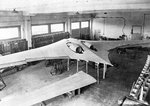 Horen Ho-229 001.jpg149.3 KB · Views: 399
Horen Ho-229 001.jpg149.3 KB · Views: 399 -
 Horten Ho-229 005.jpg145.9 KB · Views: 508
Horten Ho-229 005.jpg145.9 KB · Views: 508 -
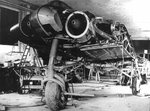 Horten Ho-229 002.jpg149.7 KB · Views: 497
Horten Ho-229 002.jpg149.7 KB · Views: 497 -
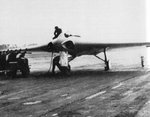 Horten Ho-229 003.jpg113.9 KB · Views: 739
Horten Ho-229 003.jpg113.9 KB · Views: 739 -
 Horten Ho-229 004.jpg133.5 KB · Views: 368
Horten Ho-229 004.jpg133.5 KB · Views: 368
Last edited:
Users who are viewing this thread
Total: 2 (members: 0, guests: 2)




